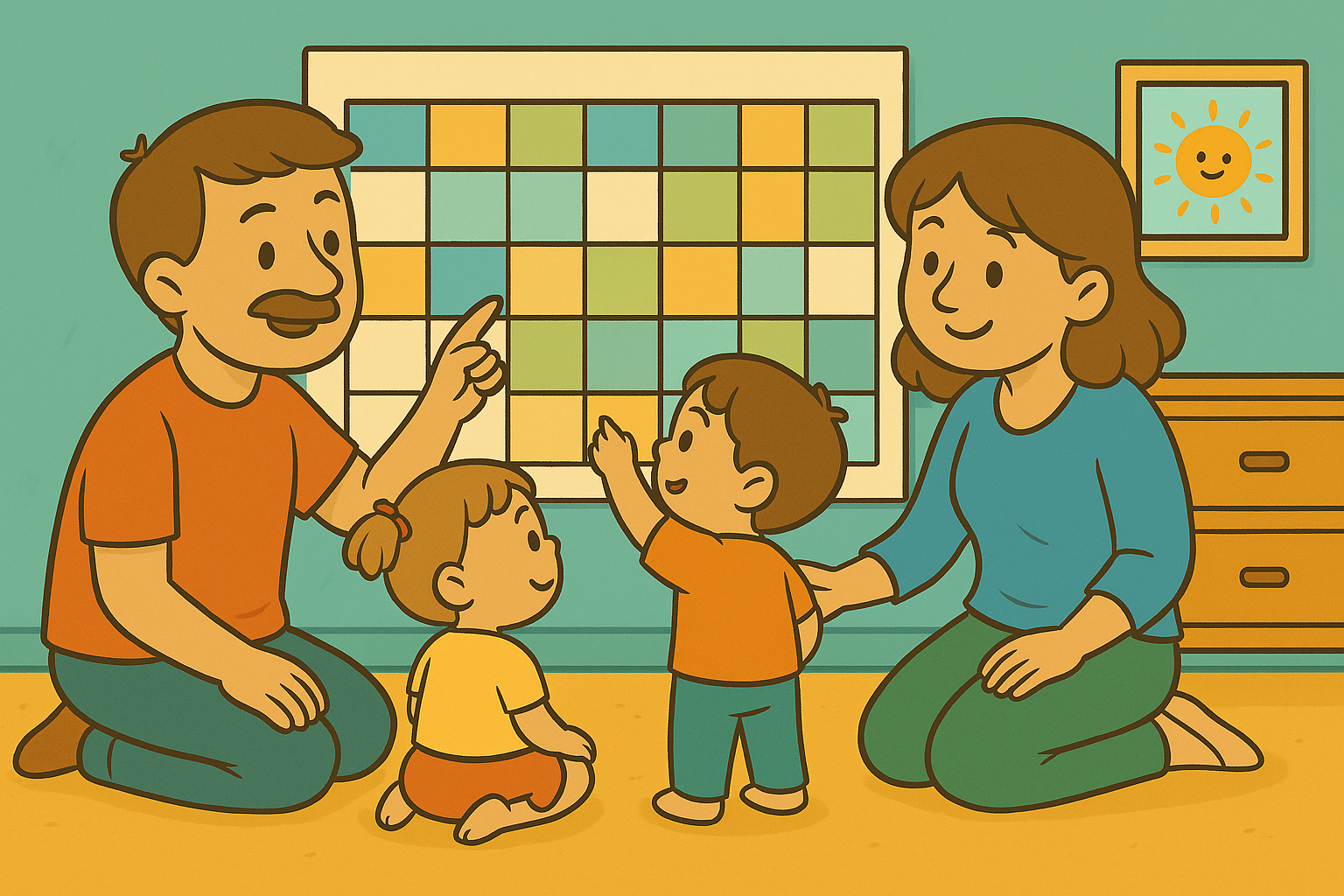How to Create a Family Calendar System
How to Create a Family Calendar System
A family calendar isn’t just a scheduling tool—it’s a way of bringing clarity, teamwork, and calm to daily life. When everyone understands what’s coming and what needs to happen, stress decreases and cooperation increases. A calendar system helps children develop awareness of time, shared responsibilities, and how family life works together.
Creating a calendar doesn’t mean running the home like a business. It means building habits that make mornings smoother, evenings more grounded, and transitions less stressful. With the right approach, a family calendar becomes more than a wall display—it becomes a rhythm the whole home begins to follow.
Why a Calendar System Helps Families Thrive
Children struggle with time because they can’t yet see it or measure it. A calendar system turns time into something visible and predictable, allowing children to develop a sense of control and confidence.
Benefits of a calendar system:
Reduces last-minute stress
Encourages independence
Teaches time awareness
Helps siblings work as a team
Eases transitions
Builds responsibility and accountability
A visible schedule becomes a steady anchor for the day.
Preparing Children for the Calendar Concept
Before children can follow a calendar, they need a basic understanding of “before,” “after,” “today,” and “tomorrow.” Predictability supports emotional regulation — as explored in The Role of Predictability in Reducing Childhood Anxiety.
Ways to prepare:
Use visual language (“after breakfast…”)
Practice sequencing activities
Play memory and ordering games
Introduce picture-based routines
Use clocks and timers consistently
Children first learn that time has a flow—and then they learn to follow it.
Choosing the Right Type of Family Calendar
There’s no single best system. The key is to match the calendar to your children’s age, needs, and learning style.
Options to consider:
Whiteboard with symbols and color coding
Magnetic calendar with picture cards
Weekly tear-off schedule sheets
Digital shared calendar (for older kids)
Poster board system with pockets or slots
Whatever format is chosen—keep it consistent and easy to read.
Making the Calendar Visual and Engaging
Children interact best with visual information. This links well with strategies from How to Use Routine Charts for Visual Learners, where visuals make time feel approachable.
Make visuals work:
Use icons for activities
Color-code each family member
Add stickers for completed events
Display “next up” cards separately
Create a daily “focus space” on one section
When time is seen—it can be managed.
Introducing the Calendar to Children
Debuting the calendar is a chance to build excitement—not pressure. The goal is to explore—not critique or correct.
Ways to introduce it:
“Let’s find our week together!”
Walk through one day at a time
Let children place some cards/tasks
Ask what they are most excited for
Practice moving a “today marker”
Show how changes can be made gently
A calendar should feel like support—not control.
Using the Calendar for Real Decisions
Once children understand the system, it can be used to guide real scheduling choices. This builds self-management skills and independence—like those in Building Independence Through Routine Choice.
Invite children to choose:
Which time to read or play
Which day for family activity
When to plan chores or homework
Which extracurriculars matter most
What can wait until next week
Choice leads naturally to planning.
Calendar Time as a Family Ritual
Weekly “calendar time” can become a routine that brings the family together. It doesn’t need to be long—just consistent.
Ways to structure it:
Gather on a Sunday evening
Share one highlight of last week
Preview coming days
Adjust routines based on needs
Check in emotionally (“Does next week feel busy?”)
This approach mirrors ideas in Family Planning Nights: Setting Goals Together, shaping teamwork slowly over time.
Teaching Priority Through Scheduling
A calendar helps children learn that not everything can fit into one day. Some things must wait—and that’s okay.
Ways to learn priority:
Highlight one “most important” daily task
Label “must-do” and “can wait” cards
Compare time blocks to activity length
Observe busy vs open days
Ask: “Is there time for it today?”
This ties closely to Teaching Kids About Priorities Through Scheduling—where planning helps build resilience.
Adapting the Calendar by Age
The calendar system should grow with children. As understanding deepens, so should responsibility.
Age-based adaptations:
Toddlers: picture days with 2–3 icons
Preschoolers: add time blocks & color-coding
Early elementary: simple checklists and weekly view
Older children: digital calendar access + goals
Calendars evolve—just like routines and skills.
When Things Don’t Go as Planned
Schedules will shift. Unexpected delays or emotional days happen. The calendar shouldn’t create pressure—only guidance.
Responding to change:
Move cards instead of erasing them
Say, “Plans changed, and that’s okay”
Do a one-minute family reset
Look for open time tomorrow
Model flexibility
A good calendar bends—but never breaks.
When the Calendar Becomes a Rhythm
Over time, the calendar stops feeling like a tool—and starts feeling like part of the home’s rhythm. Children learn that time has patterns, families are teams, and routines offer security.
And that is the true purpose of a calendar system: not control, but connection.
This content is for educational purposes and is not a substitute for professional medical or psychological advice.
Popular Parenting Articles


